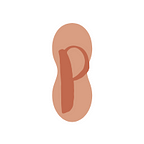Western Crete
A week in Crete is simply not enough. We left the Eastern side of the Island entirely untouched. Here are some of my favourite finds from Western Crete.
Nothing in this post is sponsored, just sharing my favourite parts of the trip!
Platanias
Sonio Restaurant
Sonio Restaurant, situated on the beach in Porto Platanias, Crete, is beautifully decorated in pale blue and white. The service and staff are fantastic and are able to cater for any specific needs and the food is just beyond incredible. We ate, solely, from the traditional menus and we were not disappointed. We were recommended to eat here by a local who also works at the following restaurant on our list, Gigi.
You can find their website here.
Agioklima Restaurant
Recommended by the wonderful GiGi herself, Agioklima is a restaurant with beautiful view. I’d recommend visiting at sunset to truly take in the views. The restaurant is run by GiGi’s partner’s family and is full of everything you’d expect from a family run Cretan restaurant. Family photos hung on the wall, family feuds in the kitchen and charismatic teasing of each other during service. It was more than just a restaurant it was an experience. It felt like you were welcomed into the home of a wonderful family and asked to join them for dinner. This was my top restaurant of the entire trip!
You can find them here.
WW2 Museum
One of the most amazing experiences was visiting the WW2 Museum in Platanias. A short, and beautiful walk into the hills from the main road, you will find Platanias’ WW2 Museum, home to ‘The Tree That Saved Crete’. The tree itself marks the spot that Cretans buried a german fighter pilot who had landed on the Island prior to the German occupation. The Priest in the area was worried that the german soldiers, who took over Crete between 1941 until 1945, would find the body and punish the villagers, whilst digging underground headquarters in the mountain. He managed to convince the soldiers to dig a metre and a half to the right of where the body was buried, avoiding the exposure of the pilot and a potential massacre. The tree that grows in that spot is now aptly referred to as ‘The Tree That Saved Crete’.
You can find it here.
The Tree In The Road
A small and quirky little visit is The Tree In The Road. The tree, I think, perfectly captures the energy oozing from Crete. Why chop it down when you could just go round it? “Siga, Siga” — “Slow, Slow”. The saying that will echoe from this trip onwards. The idea that anything worth doing, is worth doing slowly.
The Honey Shop
On your way to Agioklima, or the WW2 museum, you may bump into a very smiley man, offering you honey. All his honey is made by bees that his family keep, way up in the mountains of Crete. There, the bees feed on the pollon of the wildflowers, giving the honey an incredibly sweet taste. Taste some, and make sure you buy lots to take home!
If you are a tea drinker, ask about ‘mountain tea’ and ‘dittany’. Both are made from Cretan wildflowers and have legendary healing properties. You can pick some up from the honey shop. I enjoy mine with a dash of his honey!
You can find the honey shop here.
Hania
Old Town
Located in the heart of Hania (sometimes spelt Chania), the Old Town is both an explosion of colour and culture. The touristy shops go hand in hand with the greek ladies and gentlemen that sit on their chairs outside their houses when the work for the day is done. The architecture ranges from late Minoan civilisations all the way through to modern complexes in the newer parts of Hania. The fortification walls that surround the Old Town are fascinating. Every war fought on the Island has had its place in Hania. It is visible from just the architecture.
What I found the most interesting was the evidence of the transformation of churches to mosques and back to churches. The bulbous tops that were built to resemble the turkish mosques that were later adorned with crosses demonstrate the many hands that have been laid on the Island.
Venetian Port
The port is by far the most culturally complex. The overhanging venetian buildings with their roofs and balconies contend with the islamic architecture of the remaining mosque in the port. You can almost feel the tension that this port has felt, fighting for it survival over the last 2 thousand years.
Loutro
An untouched gem, accessible only by a long trek through a Cretan gorge or by boat from neighbouring Hora Sfakion. The water in Loutro is so clear you daren’t touch the surface for fear that you may somehow disturb the intrinsic calm that seems to hold Loutro in the palm of its hand. The blue and white buildings are an extension of the water in contrast the yellow arid mountains behind.
Both Hora Sfakion and Loutro are home to restaurants and souvenir shops galore, and while I was unfortunate enough not to try the fish on the menu, I have only heard outstanding things about it’s taste.
Crete was an Island soaked in ancient culture. In the colours, the people and even the products sold beachside. I plan on returning to visit the Eastern side, the ancient minoan ruins, the minotaur's labyrinth and other historical points such as Spinalonga Island.
Let me know if you want any more information in the comments, or anything you think I should see next time :)
Peanut x
